I suspect I’m not alone in coveting that fancy Mad Max boxset, largely in the hope of reliving the fantastic Fury Road and getting my mitts on that art book. But one does not live by Furiosa alone, and I thought today might be a great opportunity to offer up some other stories about women: triumphant and struggling, witty and monstrous, mundane and adventurous. But most of all, something with a little variety for our heroines. Because hey, romance is all fine and well and often part of the human experience, but it’s agonizingly frustrating how often that type of story automatically defaults to the domain of the “token chick character.” Certainly it would be tragic if such a mindset were to hold true even to creators known for loudly and self satisfiedly declaring themselves exemplary models of feminist ideologies.
I think I blacked out there for a second, what was I saying?
Right, great stories starring women.
5. United States of Tara (2009-2011)
In Brief: Tara, a muralist with Dissociative Identity Disorder, makes a decision that throws her recently stabilized life into chaos—tired of feeling numb and disconnected, she’s going off the medicine that has prevented her alters from emerging. Trying to manage her condition, her job, two teenage kids, and a sister who thinks she’s “just acting out,” it often feels like “healing” is forever taking a back seat to “not falling apart.”
This series has a pretty ironclad pedigree going for it, starring the incomparable Toni Collette and written by Diablo Cody post-Juno but before bock office trainwreck Jennifer’s Body. The show managed to make it three seasons on Showtime, and carries around the touch of late-2000s cable’s “edgier than you” face off (see also: the hilarious amount of extraneous boobage in the first season of Game of Thrones).
The show remains something of a controversy among the DID community: everyone can agree that it sensationalizes the condition (from the overt costume changes for Tara’s alters in the early going to the fact that there’s no such thing as a medication that suppresses alters), though the series did have an individual living in a DID system on staff; from there it diverges between those who find the portrayal harmful to general perceptions of DID or counter to their own experiences and those who found that the inaccurate details nonetheless spoke to an emotional truth of the experience of living with DID.
Certainly it resonates on a general level of living with mental illness—as someone with an almost lifelong familiarity with a heady combo of anxiety, OCD, ADD, and on again-off again depression, I found enormous amounts of emotional truth in the struggle to get by versus thriving and finding emotional fulfillment (at the risk of aggravating the controlled environment of stability), gaining a bit of ground only to feel yourself backsliding without being able to stop it, the strain of loved ones balancing between being supportive and exasperatedly wondering why you can’t just get over it already (and feeling guilty that you haven’t) and those who don’t believe you’re “really sick” at all (and whether, indeed, you are – Tara’s struggle is ultimately not for “normalcy” but to overcome the lingering trauma in her life, which is a nice sideshift from apparent cure narratives).
One might make the very valid argument that such an underrepresented condition deserves to be completely wrapped in presenting the realities and specificities of that life, but for better and worse that’s not what Tara is. Flaws, sensational soap opera-isms and all, it nonetheless delivers a well scripted show with a strong ensemble backing up a powerhouse performance from its lead actress.
You can watch the whole show free on Amazon Prime.
4. Hairspray (2007)
In Brief: Tracy Turnblad’s entire teenage existence turns around two things: her love of dance and love-from-afar of local TV heartthrob Link Larkin. She gets her shot at both when a spot opens on Baltimore’s American Bandstand-esque dance program, The Corny Collins Show. Tracy’s new fame becomes a flashpoint as her friends (who include the son and daughter of the Show’s “Negro Day” host) push for the show to become integrated.
While this is pretty much the squeaky-cleanest version of the material that exists (a steady scrubbing process from king of camp John Waters’ original 1988 film to the 2002 stage musical to this), losing most of the sexual innuendo and most of the satiric edge, there’s still no denying that it’s a vibrant, joyous thing. Tracy’s goodhearted enthusiasm seems to radiate through the production, from the popping-bright 60s color scheme to the up-tempo dance sequences to the unshakeable sincerity that lies at the show’s beating heart – even the “dude in a padded suit” conceit, a holdover from drag queen Divine’s original performance as Tracy’s mother, is a mere cover for an endearing character.
It’s “feel good” in a way that never feels like it’s taking cheap shortcuts, that matches its tone to the energy of its execution And as a nice addition, while Tracy’s choice to take part in the desegregation rally is a key part of her character arc, she isn’t suddenly the White Savior of the movement (Queen Latifah is at the head of that train, executing a minor but crucial role with both style and an underlying solemn determination) – it’s just a personal ethical choice and a desire to stand by her friends.
“But Vrai!” I hear you cry from the bowels of the viewing oubliette, “didn’t you just finish having a rant at the overwhelming percentage of female narratives couched in romance?” And you’d be right – but this isn’t a romance movie so much as it’s an “outcast makes good” movie. I can understand the confusion, of course – the latter genre almost always includes a romantic subplot, y’see, and is equally almost always made about male characters.
And yet here it is: a non-conventionally attractive (by Hollywood’s ridiculous standards, because Blonsky is cute as a button here) protagonist who starts out pursuing something to catch a crush’s attention, ends up feeling inspired to pursue a larger goal in spite of (and sometimes counter to) their original romantic goals, often coincidentally impressing the love interest with their impassioned beliefs, and then achieving the goal and being winning the romantic happy ending by way of their character growth (ideally). A common story that only uncommonly goes to women, and even when it does (Legally Blonde) tends to take care to make sure the main character fits the defined standards. And yet here we are, with a major Hollywood blockbuster where an overweight young woman wins the heart of a conventionally attractive dude without having to change her appearance at all (or worse, being “rewarded” with thinness at story’s end) while also telling a well-executed story. And if you can point me to another film that’s managed all that, I’m pretty sure you can also sell me some beachfront property in Ohio.
3. Whatever Happened to Baby Jane? (1962)
In Brief: “Baby Jane” Hudson is a celebrated vaudeville child star, spoiled by her status as the family’s major breadwinner. The tables turn, however, when adulthood finds Jane’s sister Blanche a star of Hollywood’s Golden Age while Jane is an alcoholic of miserable talent. A late night car accident breaks Blanche’s back, ending both their careers as Jane becomes Blanche’s caretaker; the pair of them rotting away in isolation as Jane’s bitter resentment and erratic behavior strains to the breaking point.
Never did a blatant attempt to capitalize on another movie’s success manage to so bless the world of American cinema as with Baby Jane. Made as a me-too in the wake of Psycho’s torrential success two years earlier, the film managed a coup in casting Hollywood heavyweights Bette Davis and Joan Crawford. The two of them loathed each other, as the story goes, something that only could have helped the entrancing horror of the onscreen rivalry.
Were it any less well made, the film would be inexcusably long (a solid 133 minutes for a thriller with only four characters worth naming). Fortunately, for all its arguable exploitation roots its eye for craft extends to the haunting soundtrack, wire-tight tension, and particularly the gorgeous cinematography. By ’62 black and white was definitely an artistic choice rather than a necessity, and the film uses it well – transforming small bedrooms in a California split-level into dark-cornered abysses and brightening the frame into an almost fuzzy unreality as Jane falls into her own delusions of grandeur, her eyes just as quickly becoming black and raging pits.
And make no mistake, this is Bette Davis’ show. Crawford is no slouch, adding layers to Blanche rather than coasting on easy martyrdom (particularly in the final scenes). But Davis is simply breathtaking, playing Jane with the small satisfaction of someone clinging to their petty scrap of power as the last means of avoiding reality, and switching on a hypnotic dime from sly cruelty to towering rage to broken child and back again. It’s a performance that stands toe to toe easily with the rest of her formidable body of work.
2. Daria (1997-2001)
In Brief: In which intelligent, misanthropic high school student Daria Morgendorffer attempts to survive high school, one sardonic quip at a time.
In trying to write a summary for this show it became clear that Daria isn’t so much a plot as it is a mindset. Daria herself stands as an almost perfect encapsulation of the disillusionment of the 90s teenager: standing on the cusp of adult and looking out to find an environment in shambles, an only growing distrust of politicians between Desert Storm, Clinton’s impeachment and the 2000 Florida recounts; and an increasingly corporatized mass culture all standing alongside the rise of a “self-help” movement that didn’t seem to be addressing those concerns so much as painting over them with the biggest and shallowest of smiley faces. Really, the whole show is an almost perfect snapshot of the 90s, with those big, blocky cell phones and flannel shirts and archetypes like “the corporate overworking mom” and “the overly sensitive new age teacher.”
That’s not to say there’s no reason to watch it outside of a history lesson. The show is still damn funny, and has at its core one of the best female friendships in modern fiction. Daria herself might be affected by the issues that were going on when the show was produced, but her use of intellectualism as both a means of processing and a defense mechanism are still quite relevant to a generation of equally disillusioned millennials. More crucially, while there’s no overarching plot the later seasons give Daria a chance to mature, becoming less dismissively acerbic while retaining her keen insight. She’s a wonderful character, voice of and influence on a generation of young women that actually bothered to give them credit for their intelligence. She’s a gift, that one.
You can watch the whole show on Hulu Plus.
1. Monstrous Regiment (2003)
In Brief: Polly Perks, resident of the tiny nation of Borogravia (which is almost perpetually at war due to the ever growing list of Abominations at the hand of their mad god Nuggen, which includes items such as the color blue and the smell of beets), has decided to join the military in order to track down her recently drafted brother Paul. Joining the men-only service disguised as “Oliver” (and aided by a well-placed sock), Polly becomes part of a unit containing a troll, an Igor, and a coffee-addicted vampire, human and non-human all equally disgusted with the whole jingoistic business and equally without anywhere else to go (and with, Polly quickly begins realizing, their own familiar secrets).
I’ve figured I could get away with including this in what’s largely a performance-based list on the grounds that there was a Chicago stage adaptation a few years ago that was by all accounts incredible, and I’m hopeful that if I bring it up frequently enough I can either will a revival into existence or sniff out some manner of recording.
Until that point, there is still the matter of the novel – and this is by no means the last you’ll hear of it round here, at the very least when the annual Favorites List gets round to the printed word. The story starts from a powerful position, wrapped in the late, great Terry Pratchett’s rich and masterful wordplay and set in a universe that’s had a past 30 novels to be fleshed out (though it also functions quite effectively as an introduction or standalone). The characters in Polly’s unit are all full fleshed and endearing, from the hulking commander Jackrum on down, and the bond the lot of them form through their journey never once feels trite or cliché – on the contrary, one struggles not to just sort of put down the book and spend some time gesticulating wildly at the level of powerful, genuine emotion being squeezed up from the page (rest assured I am doing it now).
The biting edge of commentary would be mere icing on top of a beautiful character-driven metaphor cake, were it not so cunningly laced into the story from the ground up. The novel takes “cross dressing for a cause,” which has become one of my more hated tropes (in no small part thanks to anime and manga’s glee in using it for “kind of gay looking but it’s cool guys they’re really straight” narratives) and used it as a surgical scalpel to explore ideas about gender roles, gender presentation (and the constructed nature thereof), gender in politics and as a bargaining tool in a hierarchical system alongside all that beautifully constructed character stuff. Smart, engaging, worth the read if you never touch another Discworld novel in the course of your life (though you’d be missing out were that the case), I don’t know how much more I can encourage you to read this book outside of just making individual door knocking sessions.
Which, y’know, I’ve got Expedia open is all I’m saying.
Want to share this on Tumblr? There’s a post for that!
Vrai is a queer author and pop culture blogger; their life consists of lots of cartoons and no sleep. You can read more essays and find out about their fiction at Fashionable Tinfoil Accessories, support their work via Patreon or PayPal, or remind them of the existence of Tweets.
—Please make note of The Mary Sue’s general comment policy.—
Do you follow The Mary Sue on Twitter, Facebook, Tumblr, Pinterest, & Google +?



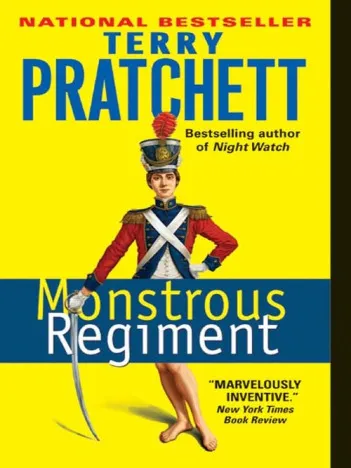
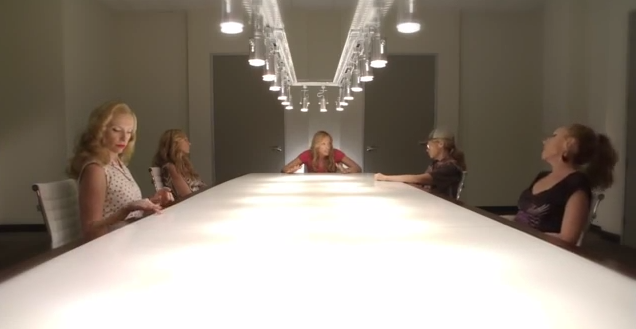
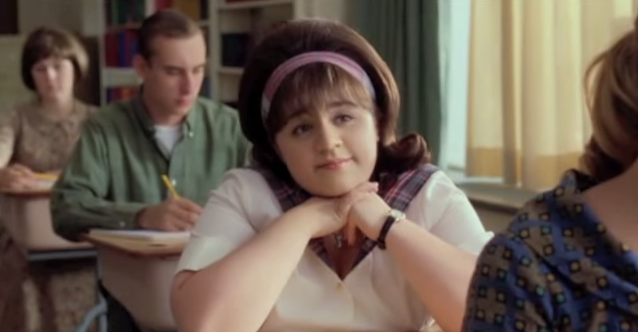
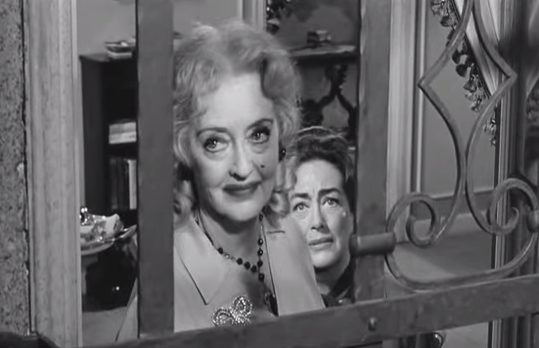
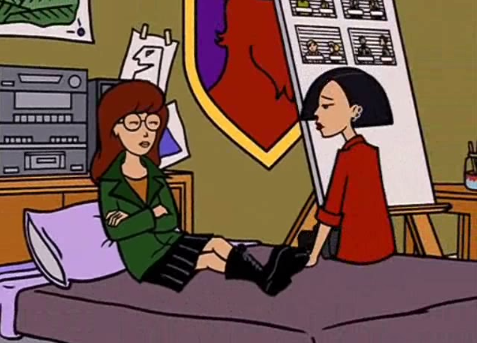
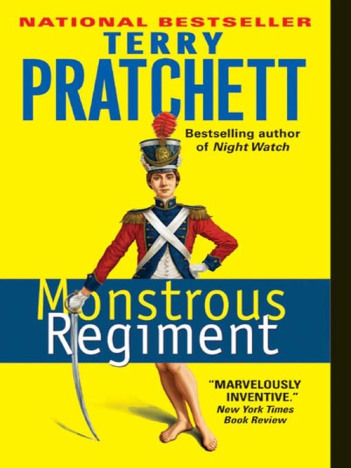





Published: Sep 4, 2015 02:10 pm